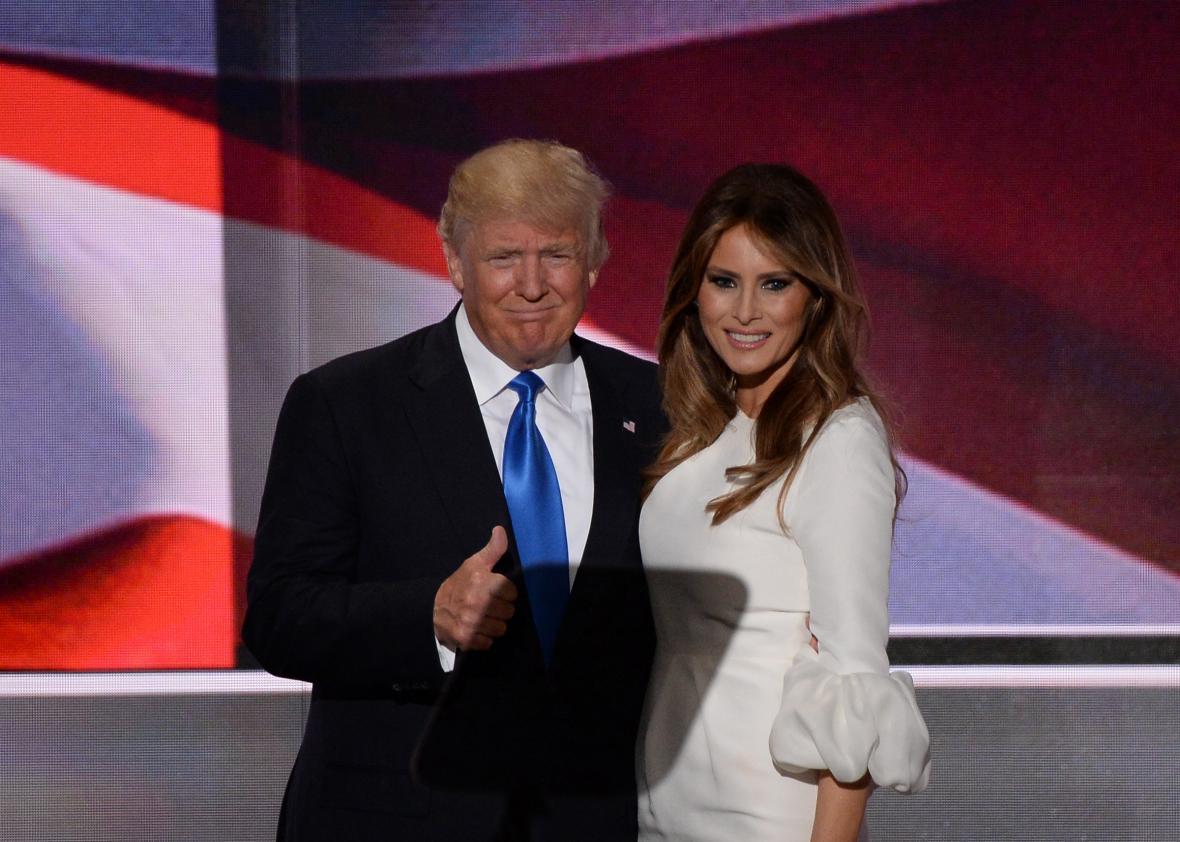Melania Trump appears to have resolved questions about the legality of her immigration status in the 1990s, releasing a letter from an attorney on Wednesday that sought to clarify that situation.
Trump immigrated to the United States from Slovenia two decades ago. How she came over had become the subject of scrutiny after questions were raised in the timeline of her arrival to work as a model in the United States and because of her husband Donald Trump’s hard-line immigration stance.
She posted a letter from her immigration attorney on Twitter, which she wrote, “states that, with 100% certainty, I correctly went through the legal process when arriving in the USA.”
Indeed, the letter does appear to answer all of the major questions about Trump’s immigration case. Michael J. Wildes, a partner at a New York law firm specializing in immigration and nationality, wrote the letter offering that Melania came to the U.S. legally.
According to Wildes, the documentation he reviewed showed that “Trump’s first entry to the United States was on August 27, 1996 pursuant to a B-1/B-2 visitor visa.” She then acquired an H1-B visa to work as a model in October and was reissued those visas every year until 2001 when she became a self-sponsored green card holder. This was four years before Melania was married to Donald Trump. She then became a citizen in 2006.
After disclosing that he had worked for Trump companies including Trump Models and the Miss Universe Organization, Wildes proceeded to go point-by-point through the outstanding questions about Melania’s immigration process.
“It has been suggested by various media outlets that in in 1995 Mrs. Trump illegally worked as a model in the United States while on a visitor visa,” Wildes wrote. “Following a review of her relevant immigration paperwork, I can unequivocally state that these allegations are not supported by the record, and are therefore completely without merit.”
Those questions had been raised in the Washington Post, Politico, and other publications including Slate when the New York Post published nude photos of Melania that it said had been taken when she was working in the United States as a model in 1995—before she would have been eligible to work legally in the country according to her public statements. Trump had also said that she had had to return periodically to Slovenia in order to renew her visa, which Politico noted didn’t appear to jibe with the process for the H-1B visa on which she would have been potentially working.
Again, Wildes seemed to comprehensively clarify those issues:
Members of the media have questioned this narrative on the grounds that some foreign workers are issued H-1B visas for up to three years. This was not the case for Mrs. Trump, however, because the Foreign Affairs Manual then used by U.S. Consulates limited the issuance of H-1B visas for Slovenian citizens to only one year. Consistent with this rule, each of Mrs. Trump’s five H-1B visas was issued for a one year period.
It has further been alleged by different media outlets that Mrs. Trump violated U.S. immigration laws by participating in a 1995 photo shoot in New York City for the French magazine Max. Again, such reports are not supported by the facts. Because Mrs. Trump did not enter the United States until August 27, 1996, the allegation that she participated in a photo shoot in 1995 is not only untrue, it is impossible. In reality, through an interview with Mrs. Trump we ascertained that the photo shoot in question did not occur until after she was admitted to the United States in H-1B visa status in October 1996.
As Talking Points Memo noted, the original Post story inaccurately credited the photos as having appeared in “the January 1996 issue of Max Magazine, whose cover featured a photo of supermodel Cindy Crawford.” That issue did not have Crawford on the cover, and it looks like the issue in question was actually from the start of 1997.
Ultimately, this appears to be a case where Trump and his campaign can point to erroneous reporting having led to a story that inaccurately portrayed him as a hypocrite. It’s a good look for Trump and a bad look for the media.
